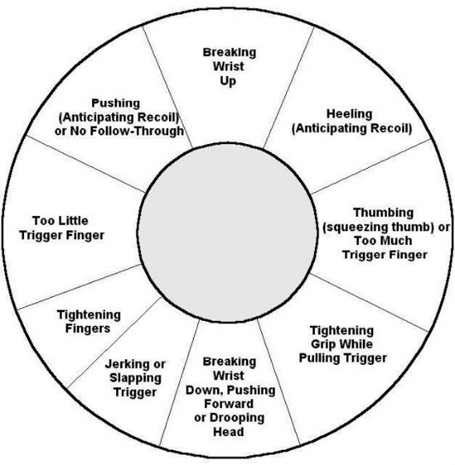You have worked hard on learning the 6 fundamentals of marksmanship, your stance, grip, sight alignment and sight picture, breath control, trigger control and follow through, but your shots are still not consistent and not always hitting the right spot. Now what??
Well the next step would be to determine where your shots are hitting the target and the reasons why. Below you will find several common shooting errors to help you figure out what could be causing your shots to be high, low, to the right, or to the left of the target center.
All explanations are for a right-handed shooter. If you shoot left-handed the results would be the opposite.
